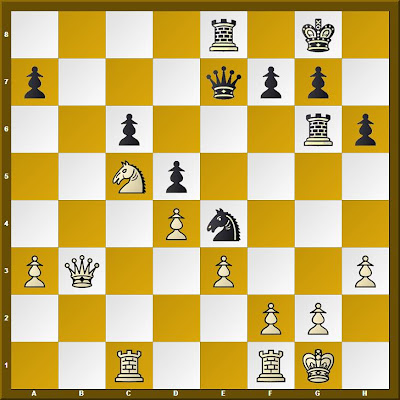Improving Focus
An excess of online blitz continued to reveal weaknesses in my training focus in May, although discipline was evident for most of the month (see "Improving through Blitz"). A good portion of the last week of the month was devoted to reading and playing through every game and variation in a chess book, William Lewis, Gioachino Greco on the Game of Chess (London: Longman, Hurst, Rees, Orme, and Brown, 1819). I posted my training goals as New Year's Resolutions on the last day of 2012.
1. In 2013, I will solve correctly 300 tactics problems each month.
I met this goal, completing 349 problems in the month. In May, I spent some time with each of my principal resources, except Lev Alburt's Chess Training Pocket Book. This text was packed for a weekend trip to our cabin, but we cancelled the trip because the forecast called for cool temperatures and rain. An update to Tactic Trainer for iPad added statistics, making it easier to track my training with this tool.
2. In 2013, I will study whole games and whole books.
I have been working my way through Max Euwe, The Development of Chess Style (1968). Euwe asserts, "The development of a chess player runs parallel with that of chess itself; a study of the history of playing methods therefore has great practical value." This idea informs my plans for my youth chess camp in June, which will focus on lessons from players during the romantic era of chess. Consequently, I also am reading very old chess books. In the past week, I went trough all 168 variations of 47 games in William Lewis, Gioachino Greco on the Game of Chess. As I read through these games in an early version of English Descriptive Notation, I entered the moves in a database. The selection of Greco's games in the ChessBase Big database and their online version is woefully incomplete. Moreover, it contains several games attributed to Greco that should be attributed to Pedro Damiano, Ruy Lopez, or Alessandro Salvio. Some of these errors are present in Lewis as well.
The eighth game in Lewis (31-32), for instance, appears in J.H. Sarratt, The Works of Damiano, Ruy-Lopez, and Salvio on the Game of Chess (London: T. Boosey, 1813), as Damiano's first game (1-3).
1.e4 e5 2.Nf3 Nf6 3.Nxe5 Nxe4 4.Qe2 Qe7 5.Qxe4 d6 6.d4 f6 7.f4 Nd7 8.Nc3 dxe5 9.Nd5 Qd6 10.dxe5 fxe5 11.fxe5 Qc6 12.Bb5 Qc5 13.Be3 Qxb5 14.Nxc7+ Kd8 15.Nxb5 1–0
Reading through these old games in these old books meets the letter of my resolution. However, I could argue with myself that the intent is not so much to review elementary tactics for beginners, but to improve my positional understanding. I am not likely to find much opportunity to put to use lessons from the games of Damiano and Greco in my match with Nikolay Bulakh or Michael Cambareri this summer. Studying whole games by living grandmasters who employ the classical French will prepare me for Michael because our last few games have all begun 1.e4 e6 2.d4 d5 3.Nc3 Nf6 4.Bg5 Be7 5.e5 Nfd7 6.Bxe7 Qxe7 7.f4 a6. Against Nikolay, they begin 1.e4 e6 2.d4 d5 3.exd5 exd5.
Despite beginning Logical Chess: Move by Move in December, I still have several games remaining to go through in this text. I did not look at it once in May, the first month of 2013 that was absent this text. I also have a couple of good books on the French Defense that I should be working through. One of them has had the virtue of sitting on the table beside my chair in the living room for most of May because I have dipped into it on a few occasions. In one of my current turn-based games, I am testing a new line against the Tarrasch Variation of the French that is recommended in that text. I have gone through several games in that variation.
I continued to use these flash cards in elementary classrooms while teaching beginners chess in May. Nonetheless, progress studying Dvoretsky's Endgame Manual and mastering the blue diagram positions must be rated lackluster.
4. In 2013, I will lose fifteen pounds.
I remain at my winter weight due to inconsistent exercise and too many fast food meals. My arms are getting stronger from playing tug-of-war with my puppies who now weigh 69 and 55 pounds at nearly eleven months of age. This past month, Max and I began our endeavor to walk every mile of the Spokane River Centennial Trail. Our longest walk so far was just under six miles.


















































